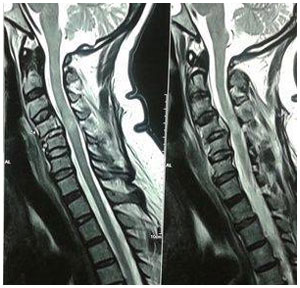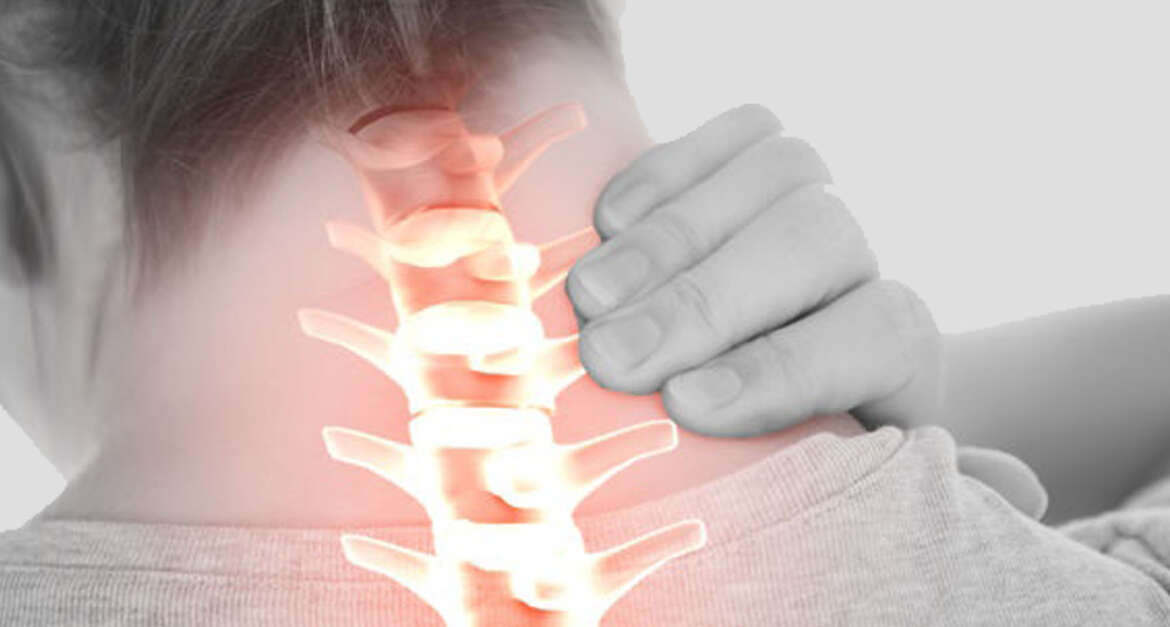Can result in disc degeneration causing moderate to severe neck pain or
Result in cervical radiculopathy which causes pain in the whole arm until the fingers
Symptoms
- Arm pain
- Tingling and numbness in arms and fingers
Treatment
-
- Weakness may be present
- Anti-inflammatory medications
- Physiotherapy, neck strengthening exercises
Surgery
-
- Anterior cervical discectomy and
- Fusion cervical disc replacement

FAQs
What are the spinal causes of neck pain?
Cervical spondylosis (arthritis), nerve compression due to disc prolapse, whiplash injury, spinal trauma, cervical instability, tumors, infection, inflammatory situations like ankylosing spondylitis and rheumatoid arthritis.
What are the non-spinal causes of neck pain?
Stress, shoulder problems, dystonia, brachial plexitis, cardiac problems, thoracic outlet syndrome, head and neck infections, and tumors.
What is cervical spondylosis?
This is the normal ageing method and occurs in specifically the same way as in the lower back. It is often termed Cervical Spondylosis. During the typical ageing process, the intervertebral disc loses water content and grows stiffer and rigid. The disc over time deteriorates and bulges. As this occurs, the height is lost at the front of the spine and the facet joints at the back of the spine start to take more load. Facet joint wear and tear (arthritis) then happens. Predominantly it is genetic in origin. Patients with degenerative disc condition in the low back will often have it in the neck and vice versa.
Treatment normally includes non-operative measures such as medications, core stability exercises, physiotherapy programmes, pilates, yoga. Common options are spine injections such as facet joint injections and trigger point injections. In exactly selected patients, Surgery can improve pain and function in up to 70% of patients if a focal cause can be recognised accurately preoperatively.
What is Cervical myelopathy?
Cervical myelopathy is a general degenerative condition caused by prolonged compression on the cervical spinal cord by conditions like degenerative cervical spondylosis, congenital stenosis, ossified posterior longitudinal ligament, tumor, epidural abscess, trauma. Symptoms are characterized by weakness and clumsiness in hands, gait imbalance, loss of grip function and reduction in a fine motor activity like writing and buttoning up shirt/blouse.Bowel/bladder dysfunction can occur in chronic cases. Non- operative treatment modalities are indicated in patients with mild disease with no functional impairment. Surgical decompression and stabilization are indicated in patients with significant functional impairment. The main objective of surgery is to retain the existing function.
What is whiplash injury?
Whiplash introduces to pain in the neck area caused after the particular mechanism of hyperflexion and hyperextension normally during motor vehicle accidents. Usually occurs in young adults aged between 20 and 40 years. The signs include neck pain and headache, stiffness, pain in the shoulder or between the shoulder blades, pain and numbness in the arm, difficulty in concentrating, annoyance, sleep disorder and fatigue. There is no characteristic test for whiplash. It is a self-limiting condition with a favorable prognosis for the largest patients.

